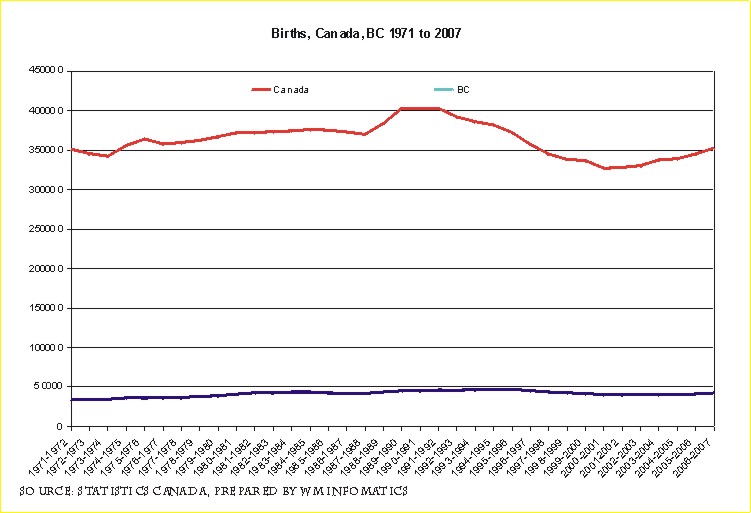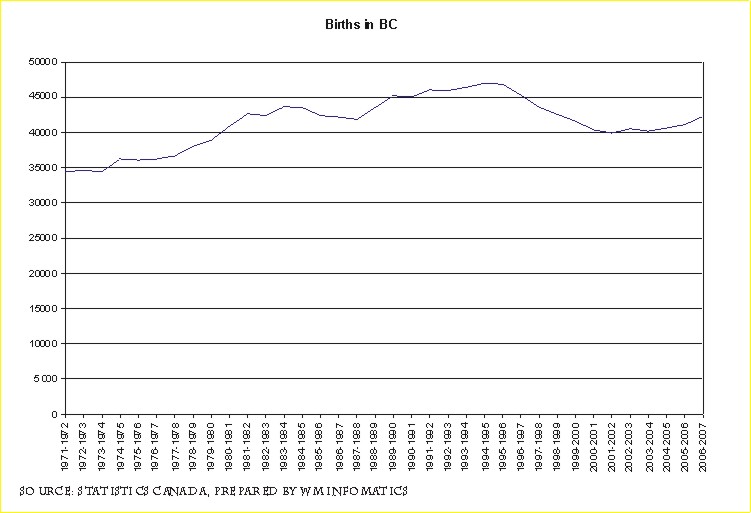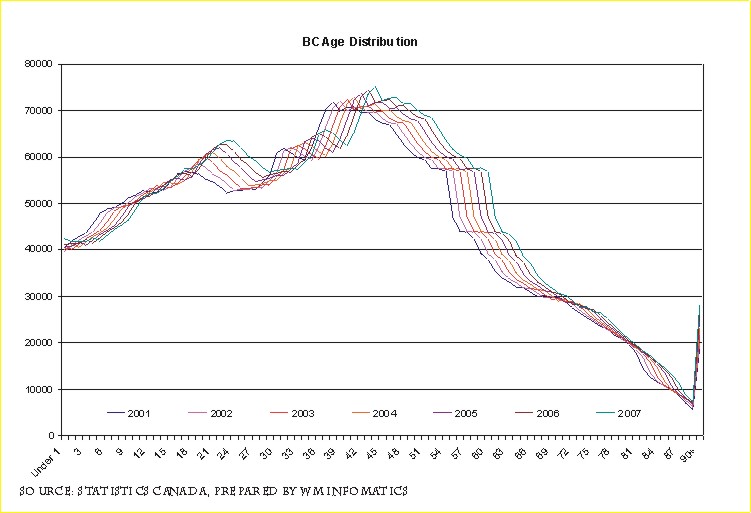The 2006 official numbers for births, were recently released from Statistics Canada. This information is helpful in shedding light on future school enrollment. Reproduction continues to increase in Canada since the decline in the nineteen nineties ending in 2001.
The decline in births in the late nineteen nineties in BC has resulted in lower school enrollments. According to the BC Teacher Federation, between 2001 and 2007, 177 schools were closed in BC.
The 2001 census results showed that in Canada, the number of children under 5 years of age declined by 221,545, between 1996 and 2001, almost a quarter of a million fewer children. The much anticipated 2006 census revealed that between 2001 and 2006 the population decline for those under 5 slowed considerably to just 5,745 fewer children.

The 2006 Census also showed that the decline lasted for only 7 years. This dip in the population is moving thru the school grades resulting in lower enrollments, and is now reaching into the middle schools (the decline starting in 1996 means fewer twelve year olds in 2008).

In BC, since the 1996 census, the number of school aged children 6 to 18 years of age, has fluctuated. In 1996 there were 648,595 youths, and this number increased by 23,105 to 671,700 in 2001, then declined by 15,330 to 656,370 school aged children in 2006. The children of the baby boomers, often called the echo, are now growing into reproductive age.
In BC, the number of births began to increase in 2003 after declining from the high of ~46,000 in 1995 to just over 40,000 in 2002. The 2006 Birth numbers show an increase to almost 42,000 births. It is likely that the number of births has continued to increase since 2006. Both the number of reproductive females and the fertility rate have been increasing. The continued rise in births coupled with the recent increases in immigration will likely result in higher than expected school enrollments.
Also, changes in birthing usually follow changes in economic activity. During boom times, the number of births usually increases, and alternately when the economy slows, the number of births declines.
Within BC there is considerable variation in the change in the number of children. Some areas, particularly the suburbs around core areas, such as Surrey and Saanich, are attractive to working families as are the intermediate nodes, like Kelowna, Nanaimo, Courtenay/Comox. However, in retirement communities like the Okanagan South and Parksville/Qualicum where there are relatively fewer children living at home (fewer working families) the recovery will likely be slower. Nonetheless, at the provincial level, the number of children entering elementary school should begin to increase slowly over the next few years.
